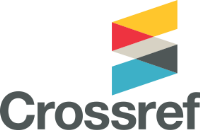DIGITAL INCLUSION: DIAGNOSING THE PROBLEMS OF USERS WITH COGNITIVE DISABILITIES
DOI:
https://doi.org/10.32782/2787-5137-2025-1-6Keywords:
diagnostics, digital accessibility, cognitive disabilities, inclusion, adaptive technologiesAbstract
Introduction. The article focuses on the diagnosis of problems that arise in the digital environment for young people and adolescents with cognitive disabilities. In today’s digital environment, access to government and edu- cational services is increasingly being provided through online platforms. However, for young people with cognitive disabilities, interaction with digital resources often remains difficult due to the unaccounted-for peculiarities of their perception, information processing and navigation in the online space. Despite the existence of international accessibility standards (in particular, WCAG), a significant part of state web resources remains unsuitable for this category of users, which leads to social isolation and restrictions on access to critical services.The purpose of the article. To analyze the key barriers faced by young people with cognitive disabilities when work- ing with digital technologies and state web resources. To describe a diagnostic program to identify the functionality and accessibility of digital technologies.The author identifies the regularities of the phenomenon under study using theoretical and empirical methods, includ- ing the analysis of behavioral reactions during interaction with digital platforms, psychodiagnostics methods for non- verbal assessment of intelligence: Leiter-3, PSSUQ (digital usability scale). The article highlights the main barriers to digital interaction for young people with cognitive disabilities, including: difficulty in navigation, information overload, non-transparent interfaces, and insufficient support for alternative communication methods. The key consequences of these barriers are identified, including the formation of a sense of incompetence, increased dependence on outside help, and increased anxiety when using digital services.Scientific novelty. For the first time, a comprehensive analysis of digital barriers for young people with cognitive disabilities was carried out, taking into account not only the technical aspects of accessibility (according to WCAG), but also the psychological and behavioral features of interaction with digital platforms. It is proposed to integrate psychodi- agnostics data (Leiter-3, PSSUQ) into digital design processes to predict possible barriers at the stage of service design.It is concluded that the development of digital inclusion requires not only the adaptation of interfaces, but also a comprehensive assessment system that will allow predicting barriers at the design stage of digital services. Integration of the obtained diagnostic data into digital design processes will contribute to the creation of comfortable, accessible technologies in accordance with the principles of universal design and international standards.
References
Бородкіна І., Бородкін Г. Шляхи забезпечення доступності вебресурсів для людей з обмеженими можливостями. Імплементація європейських стандартів в українські освітні дослідження: збірник матеріалів конференції Української асоціації дослідників освіти (21 червня 2019 р.). Київ, 2019. С. 25–28.
Гуляєва Л., Головко Я., Філь Г. Освіта молоді з інвалідністю в інформаційному суспільстві: можливості соціальних медіа. Актуальні проблеми неперервної освіти в інформаційному суспільстві: збірник матер. конф. (Київ, 29–30 травня 2020). Київ, 2020. С. 259–262.
Досвід користування публічними цифровими послугами (травень–червень 2022). Моніторинговий звіт. URL: https://r2p.org.ua/page/dosvid-korystuvannya-publichnymy-czyfrovymy-poslugamy (дата звернення: 16.03.2025).
Інклюзивність та права людини на передньому краї. Доступність сервісів та інструментів електронного урядування для громадян в Україні. Підготовлено дослідницькою агенцією Info Sapiens та «ВГО «Національна Асамблея людей з інвалідністю України» (ПОГ «Ресурсний центр «Безбар’єрна Україна»). 2021. URL: https://naiu.org.ua/wp-content/uploads/2021/09 (дата звернення: 16.03.2025).
Костюк О. Адаптивні інформаційно-комунікаційні технології для інклюзивної освіти дітей з обмеженими можливостями. Міжнародний журнал з новітніх технологій у навчанні (iJET). 2018. № 13 (4). С. 4–17.
Криклій О. Концепція цифрової інклюзії. Сутність, фактори, елементи. Економічні горизонти. 2022. № 3 (21). С. 62–71.
Міжнародна класифікація функціонування, обмеження життєдіяльності та здоров’я. Lorenzo Billiet, Anne-Marie Denolf. 2020–2021. URL: https://www.ukrothe.eu/sites/default/files/uploads/s4-icf-mizhnarodna-klasifikaciya-funkcionuvannya-obmezhennya-zhittediyalnosti-ta-zdorovya.pdf (дата звернення: 16.03.2025).
Освіта для цифрової трансформації суспільства. Edukacja dla cyfrowej transformacji społeczeństwa / Education for digital transformation of society: монографія: у 2 т. Т. 1 / за наук. ред. В. Кременя та ін. Київ: ТОВ «Юрка Любченка», 2024. 526 с.
Сасіна І. Забезпечення інформаційної доступності для людей з когнітивними порушеннями (огляд міжнародних документів та досліджень). Inclusion and diversity. 2024. Вип. 3. С. 67–72.
Давиденко Г. Цифрова інклюзія та доступність: соціальна діджиталізація: монографія. Вінниця: ТВОРИ, 2023. 240 с.
Convention on the Rights of Persons with Disabilities. 2006. URL: https://www.ohchr.org/en/instru- ments-mechanisms/instruments/convention-rights-persons-disabilities (дата звернення: 17.03.2025).
Fajardo V., ´Avila A., Ferrer G., Tavares M.G., ´Omez A., Gern ´А. Easy-to-read texts for students with intellectual disabilities: Linguistic factors influence comprehension. J. Appl. Res. Intel. Dis. 2014. № 27. Р. 212–225. DOI: https://doi.org/10.1111/jar.12065, wiley.com/10.1111/jar.1206.
Seeman & Lewis. Cognitive Accessibility User Research. 2015. URL: http://www.w3.org/TR/2015/ WD-coga-user-research-20150115 (дата звернення: 17.03.2025).







